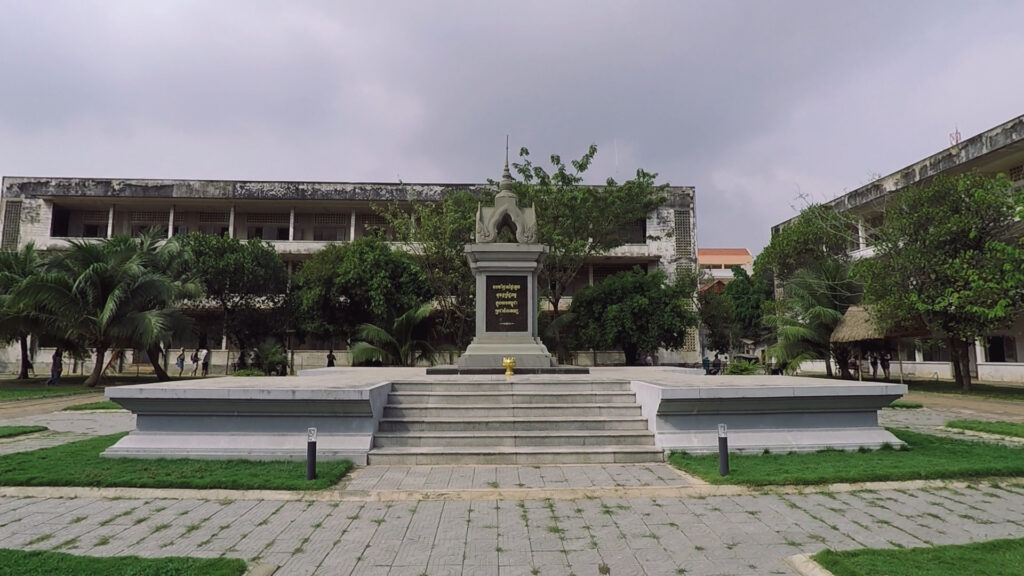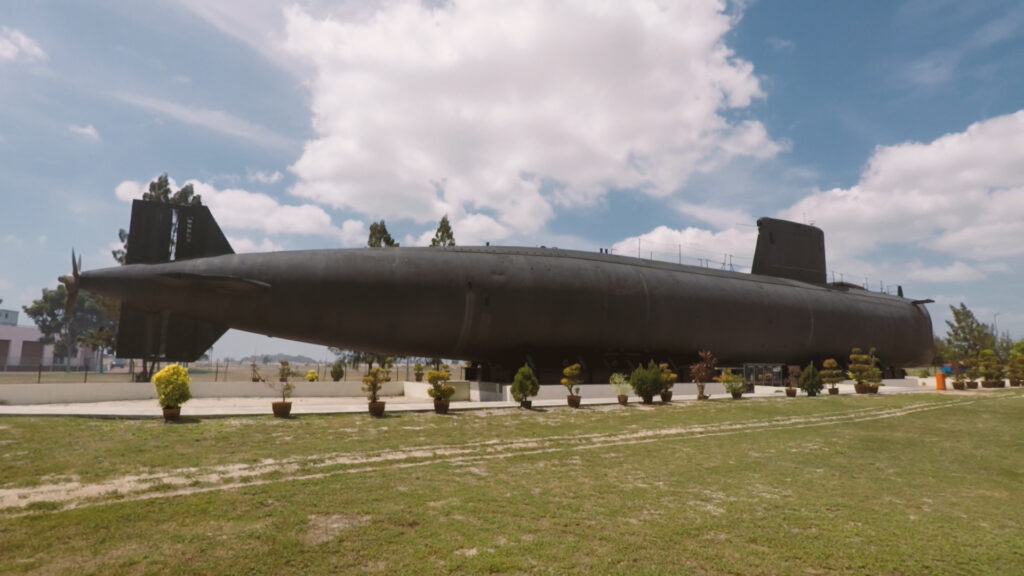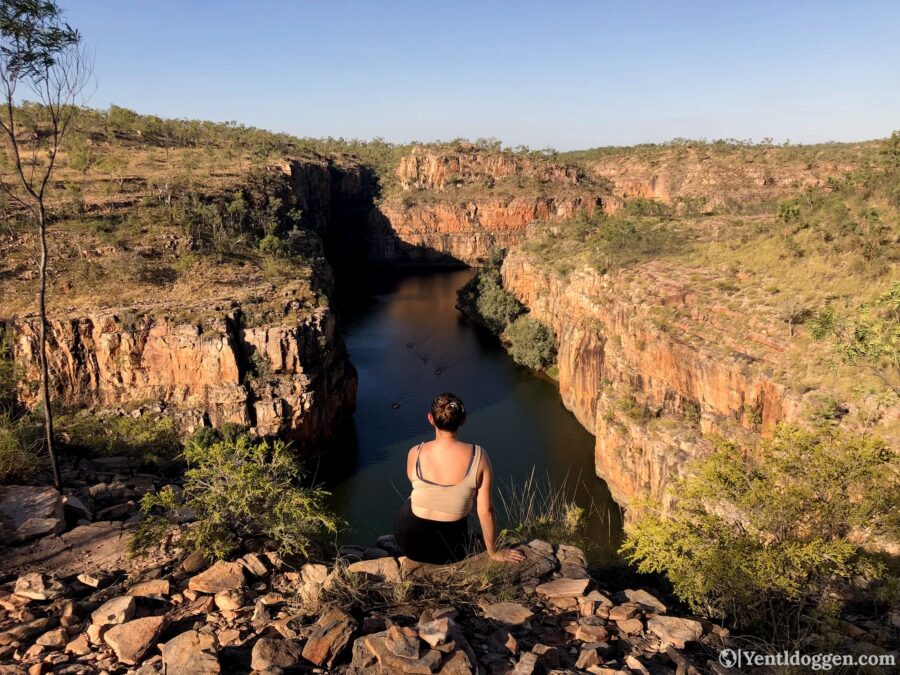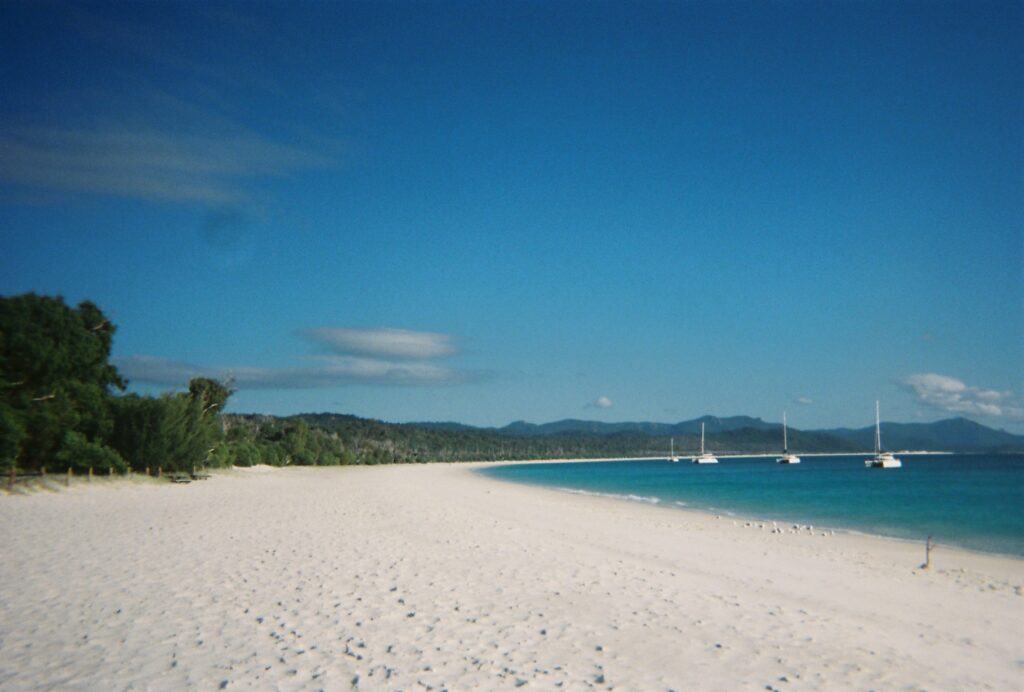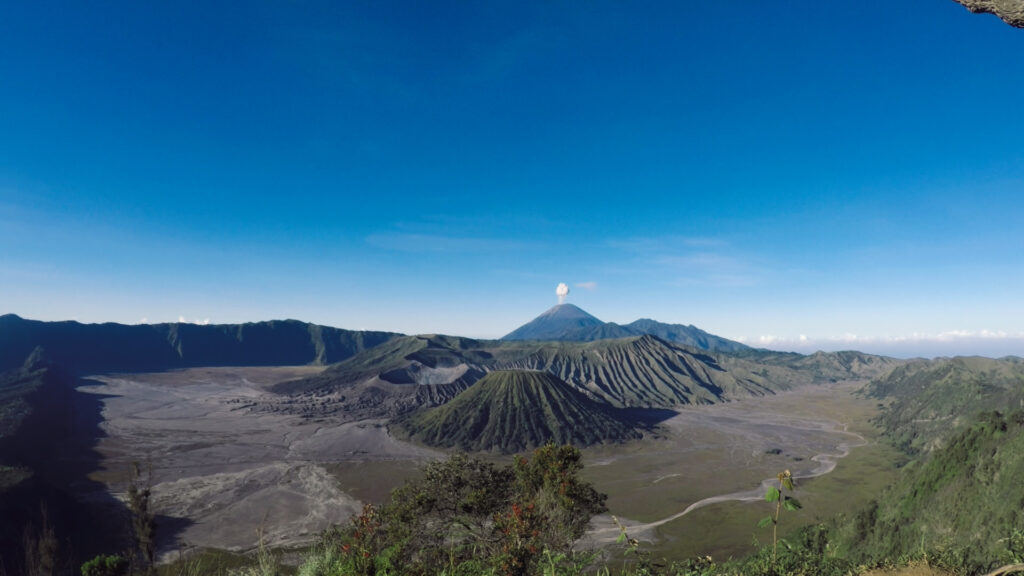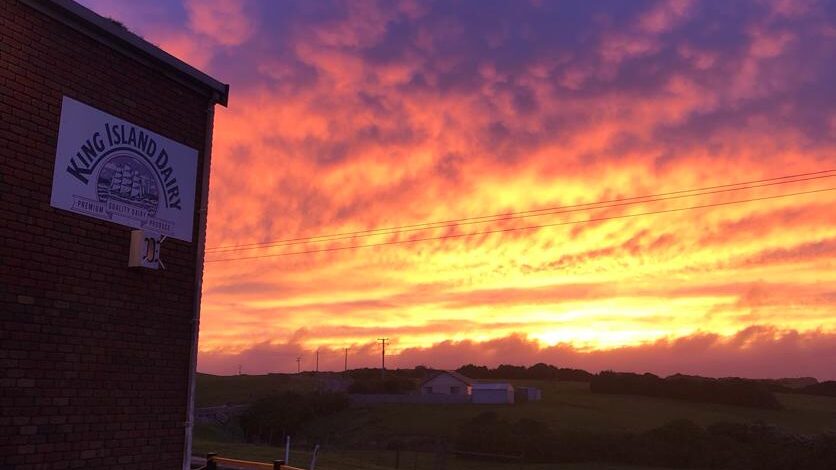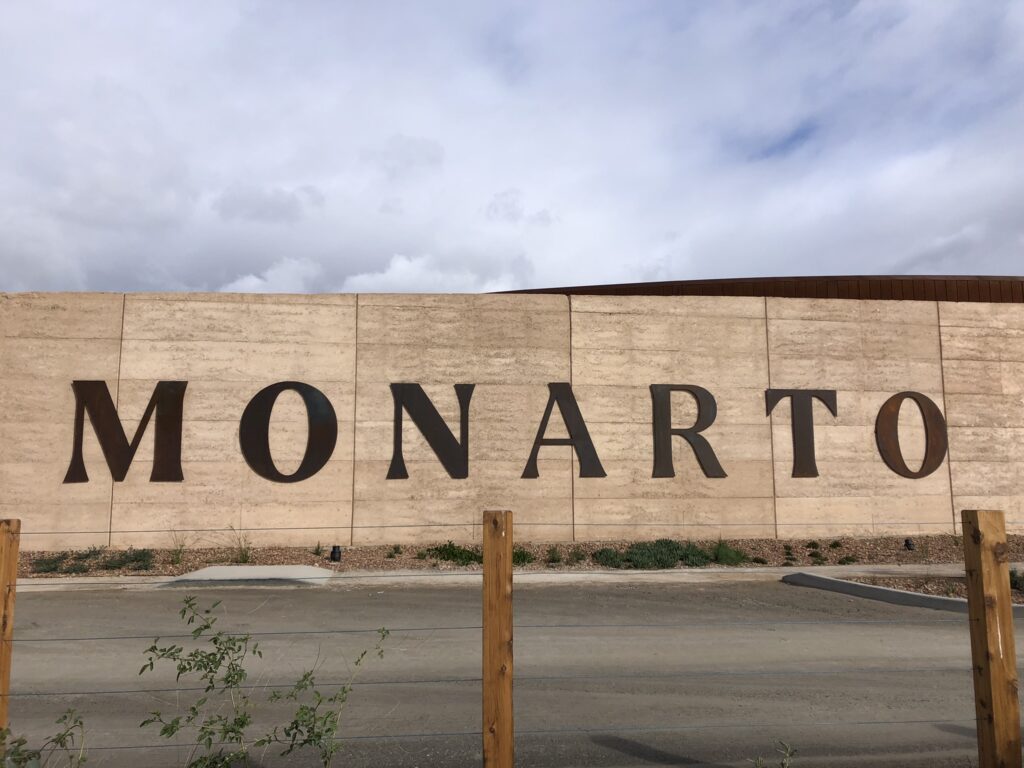Australia travel guides, travel, Travel Guides
A complete travel guide to visiting Maria Island in Tasmania.
On a recent visit to Melbourne, one of my friends pointed out how I had spent more time on the islands of Australia than on the mainland itself. I could only agree, but with good reasons. There is just something about the islands in Australia. Their ecosystems are unique, and the assembled combinations of wildlife are incredible. This statement counts for most of Australia’s islands, particularly Maria Island. I was lucky to spend about a week in this beautiful environment while travelling through Tasmania. Not long after, I wrote a list of the top reasons to visit Maria Island. Additionally, In this complete guide to visiting Maria Island, I hope to give the needed information to make this trip unforgettable for everybody looking into visiting Maria Island!
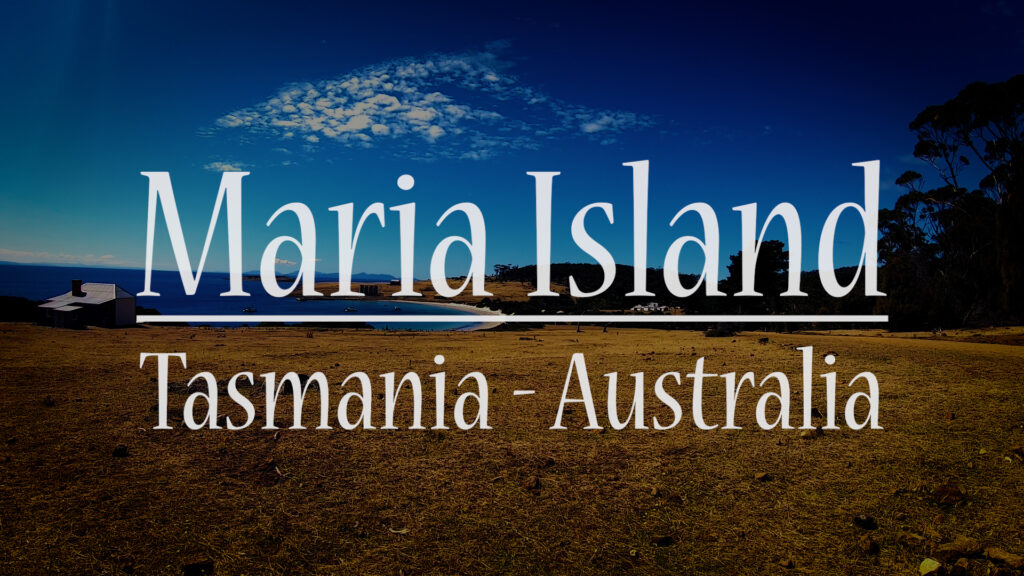
Being called Tasmania’s Noah’s ark, this place offers some of Tasmania’s most incredible wildlife. Maria Island has become home to some of the state’s most threatened populations of native animals. In the 1960’s they introduced the Cape Barren Geese and the forester Kangaroo to the Island. On top of that, in the early 2000s, due to a disease on the mainland, they introduced 28 healthy Tasmanian Devils. Their population grew from 28 to about 90 devils. Even better, the Island is one of the few islands globally without any cars and where there aren’t any permanent residents. It makes it easy to understand why this place is a natural sanctuary. And that’s only when you talk about the animals, in this guide I will try to cover every aspect of Maria Island.
How to get to Maria Island:
Since this magical, mountainous and UNESCO World Heritage Listed island is located off the east coast of Tasmania, the options of getting there are easy but limited. One way to get there is to book a day tour out of Hobart, so everything is arranged for you. However, I do recommend going at your own pace, and even then, the options are pretty straightforward:
Take the ferry:
The primary and easiest way to get there is by ferry. The Encounter Maria Island passenger ferry leaves from Triabunna and takes about 45-min one-way. Don’t worry; you will definitely enjoy the views from the ferry on the steady 17km stretch across the open water. For the latest prices and timetables, I recommend checking their website. You don’t need to buy your ferry ticket or National Park Pass upfront. There is a touristic information office in Triabunna to buy them last minute. However, to make sure your trip goes as smoothly as possible, it is recommended that you do. Your ticket includes one 7kg carry-on bag. Additional bags, bikes or even kayaks come with a price.
Triabunna itself is easy reachable by car following the Tasman Highway (A3). From Hobart, it takes about 90min, and from Launceston, it’s a 3 hours drive. Triabunna also has a bus stop in front of the touristic information office, so it is possible to get there by public transport from Hobart. (The Tassielink 737 bus)
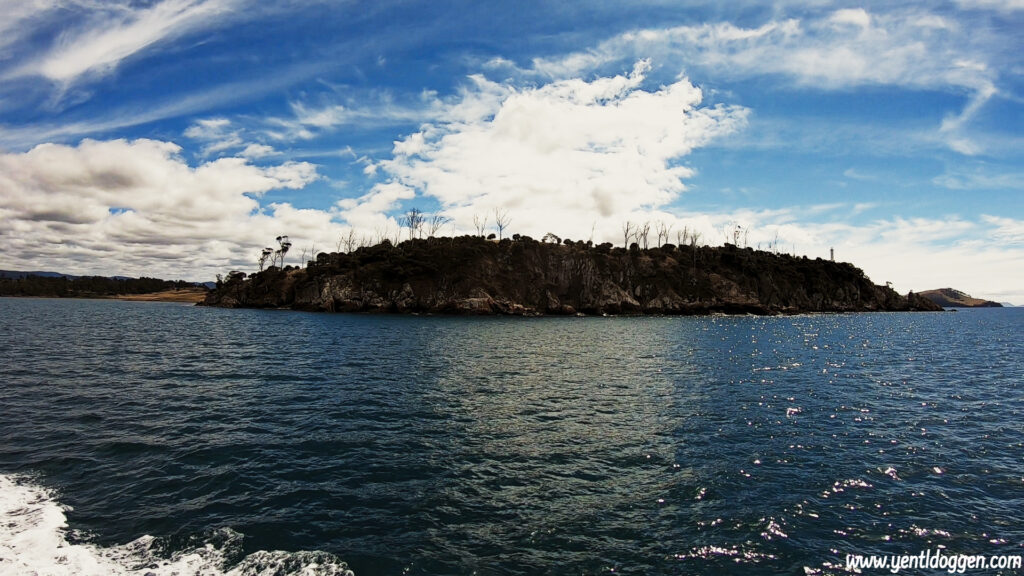
Arriving by Air:
Although Maria Island is a secluded place with no permanent residents, Darlington has an airstrip, making it possible to arrive by plane. As a private pilot, you need to obtain the authority to land on the island. Applying should be done at least seven days beforehand on mariaislandenquiries@parks.tas.gov.au. In addition, you need to pay a landing fee for every person who takes part in the flight within seven days after arriving.
If you are not a private pilot, you can take a tour with Par Avion. Their wineglass and wildlife tour flies you from Hobart to Maria Island for a quick stop and flies through over Freycinet National Park before returning to Hobart. Your time on Maria island is pretty short, but it’s a unique experience! Make sure you reach a minimum of 2 persons, and you can tell them what dates fit your 11 AM excursion the best!
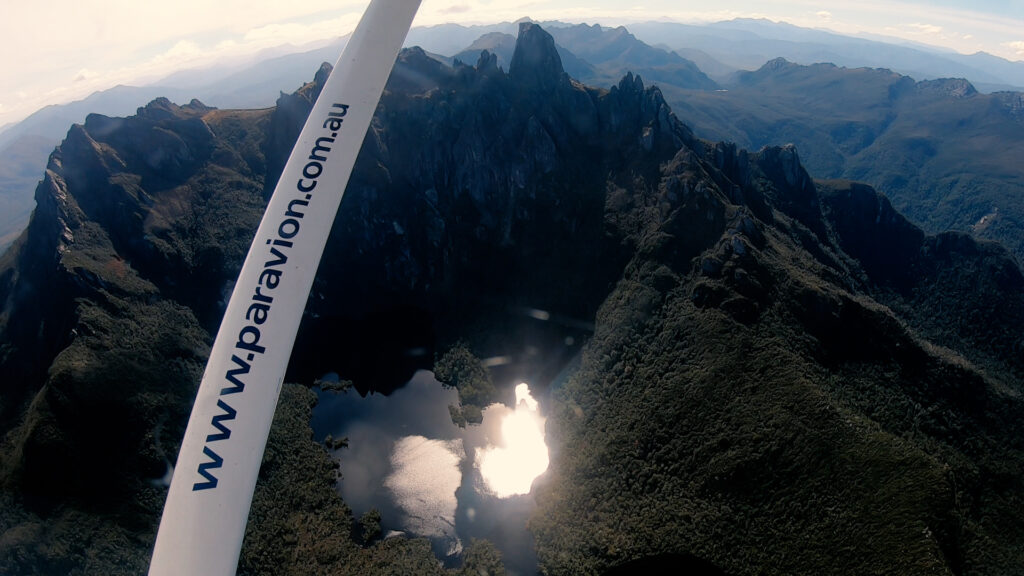
How to get around Maria Island:
Being only 20km in length and 13km in width, Maria Island is a dream destination for many hikers and bikers. You can easily see the whole island in a relatively short time. Bike hire is available on the island, but you can also take your own bike on the ferry. I mentioned before that there is no car access, but they made all tracks very hike and bike-friendly.
Exploring Maria Island by foot:
The main attractions are only a relatively short walk away from the jetty terminal. If you choose to make a day trip by foot, leave early enough and keep close to the Darlington area. In case you stay longer than a day, you can easily make your way to all places on the island by foot. If you want to head to the south of the island, keep in mind that you might need more than one night. Later in this post, I will talk about the best things to do on a day or multiple-day trip.
Exploring the island by bicycle:
If you don’t like hiking or don’t have multiple days to spend on Maria Island, biking might make a world of difference. It will give you more time to see the attractions. Of course, watch the roads as this is a place where (no-harmful) wildlife makes the rules. You can bring your bike over on the ferry for AUD10, but you can also hire one over here. There is only a limited amount available. As with the penitentiary, pre-book your bicycle in the summer months through the ferry company.
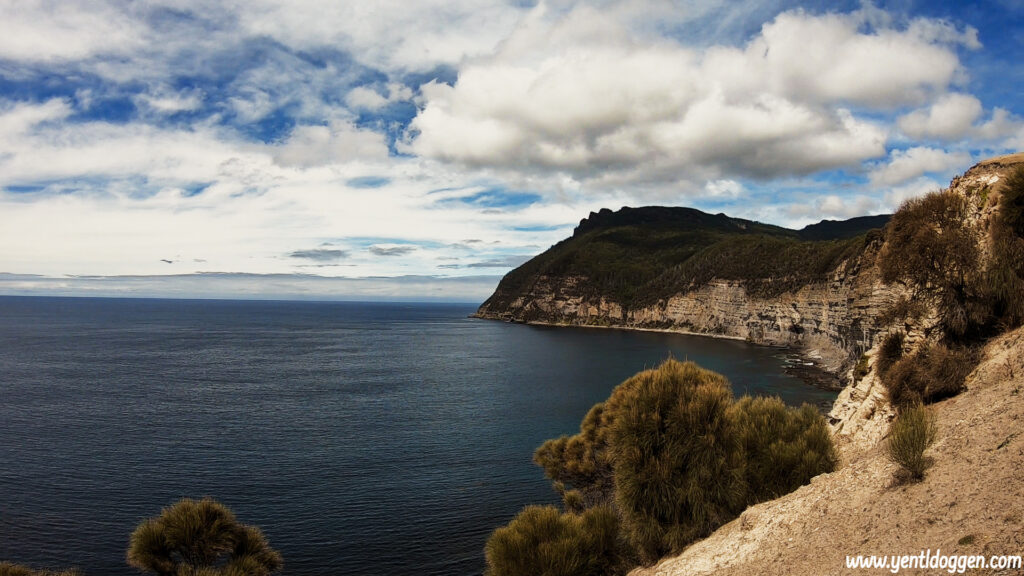
Things to know before you go to Maria Island:
First things first, and before we get into the complete travel guide to visiting Maria Island, I’ll cover some basic information to get you started. The following sections enclose how Australians pronounce Maria Island, the best time of year to visit and some tips that you should know before heading off or booking your trip.
Pronunciation:
To make sure everybody is on the same page pronouncing Maria Island. The Australians call it ‘Ma-rye-ah’ island and not ‘me-ree-ah’. Next time you talk about the island, make sure you start singing ‘All I Want For Christmas’ in your head. Mariah Carey will get your pronunciation right!
Best time to visit Maria Island:
You can visit Maria Island all year round, and every season has its unique features. However, the best time is during the Tasmanian summer, from December till March. In summer, the days are the longest and the temperatures the highest. Besides, it decreases your chance of rain, which is the highest from June till November.
How long to stay on Maria Island:
The island is a popular destination for a day trip and sometimes even a half-day trip. Due to the transport prices and the National Park Fee, you should aim for at least the whole day. On a full-day trip, you can easily see all the major sights. However, spending a night gets you out of Darlington, the main town. Moreover, spending multiple nights brings you all over the island and allows you to connect with the place entirely. Whichever you choose, I’ll include the best sights for every option later in this post.
There are no cars on the island:
Maria island is one of the few places globally that doesn’t have car access. The only vehicle permitted to drive on the island is the Parks and Wildlife Service. Luckily, there are enough free parking spots to park at the marina in Triabunna to enjoy your vehicle-free little holiday. If you are travelling by campervan, there are other options to stay the night on the island, which I’ll cover later.
There are no shops:
No shops on the island means that you have to prepare yourself. You need to bring food and other things for your day or multiple-day trip. However, there is free clean water to fill up water bottles, and Darlington offers amenities to cook food. If you go further into the island or want to sleep at other campsites, you need to bring your own cooking gear. I’ll add a checklist at the end of this post to have everything you need! Furthermore, the clean water also ensures hot showers on the island. They come with a small fee, but nothing too much if you decide to spend a week there!
You can go without a tour:
It is pretty straightforward to visit Maria Island yourself, so you do not need a tour. Even when you want to walk the Maria Island Walk, you can easily do it yourself. You don’t need a tour, but you need to be prepared. Besides, for the prices of some tours, you can buy everything you need to go by yourself. Additionally, that gear can be helpful for other destinations in Tasmania. So that’s a double win. Make sure to watch the list in this post on what to bring to Maria Island.
No dogs or pets:
As a general Tasmanian rule, no dogs or other pets are allowed in nature parks and nature reserves. Since Maria Island is a National Park by itself, you can’t bring animals over. It is not a personal thing but serves as a protection to the native wildlife. Especially on Maria Island, because they have multiple rare and endangered species.
Maria Island’s history:
Before the Europeans arrived in Australia, Maria Island was inhabited by the indigenous Puthikwilayto people. However, it was only in 1642 that the island got its name. It was first sighted by Abel Tasman, who named it after the wife of the Governor-General of the Dutch East India Company, Maria van Diemen. All the ruins of the 14 buildings on Maria Island are one of Australia’s most intact convict sites. In 1825, the penal colony opened in Darlington. It was back then that they built the penitentiary and the commissariat store. The settlement closed only seven years later but was reopened again in 1842 as a probation station. The probation station was closed down in 1850, which was the end of the convict area.
In the 1880s, the Italian named Diego Bernacchi leased the Island and renamed Darlington San Diego. He had planned to grow fruit and make wine and silk. Moreover, he started building a tourist resort, including a hotel and a coffee palace restaurant. The island boomed and had about 250 inhabitants. During the depression and financial crisis of the 1890s, his plans did not succeed. All that was left was a small farming community.
In the 1920s, a large cement company was opened on the island. It was pretty successful at the start as the population grew to up to 500 residents. Ten years later, the cement company moved and closed its site on Maria Island. Except for some farming families, most of the residents left the island. In 1971 when all people were gone, Maria Island became a national park officially. The tracks of their railroad and the large silos near the ferry dock date back to this time.
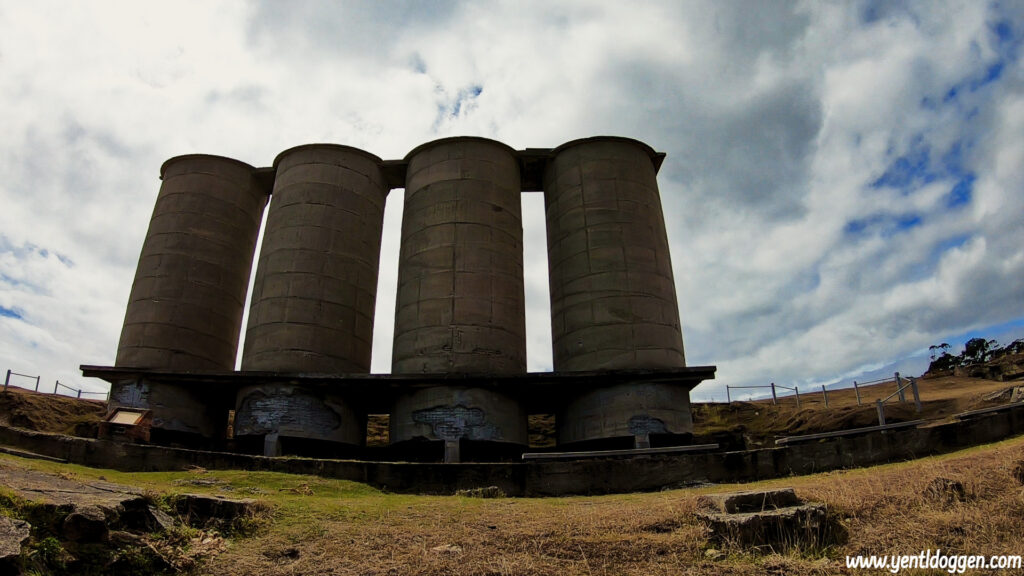
Best things to do and see on Maria Island:
On Maria Island, there are two kinds of visitors: those who come here for one day and those who spend the night. Suppose you are visiting Maria Island on a day trip. In that case, I highly recommend taking it easy and staying around the main settlement, Darlington. It is not that it is impossible to go further into the Island. Especially if you are coming by bike, the options are broader. But, coming to a place like Maria Island is quality over quantity. You are better off enjoying and taking in the things you see than ensuring you’ve done every attraction. It is not worth rushing through the Island. That’s not a Maria Island thing to do.
See Maria Island’s painted cliffs:
About 2.6km out of Darlington, the painted cliffs are an absolute must-do on your trip. These brightly coloured sandstone cliffs are well-known for their swirling formations. Besides, they are one of the best sandstone rock formations in Tasmania. The traces of red iron oxide inside them and thousands of years of wave carving give the painted cliffs these unique characteristics. The best time to visit is when the sun shines from the west, accentuating the colours. However, you want to get there around low tide for a stroll around. During high tide, they aren’t easy to access.
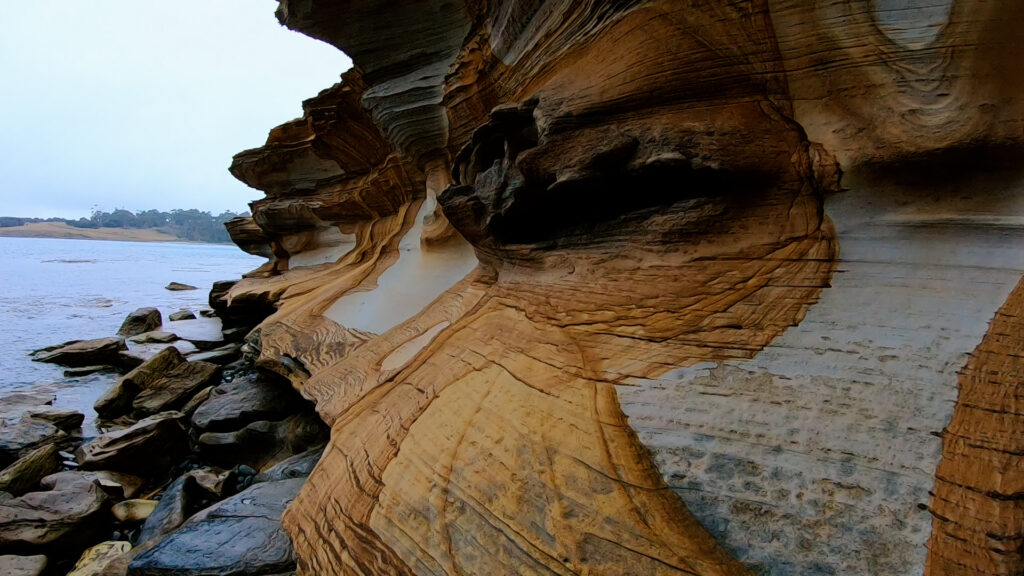
Search for fossils at the fossil cliffs:
The fossil cliffs, the highlight of the Fossil Cliffs Circuit walk, provide a fantastic overview of Maria’s Island’s past. In these limestone rock walls, which used the service as a former quarry, you find clams, corals, scallop shells and sea fans. The 4,5 km circuit leads past the Bishop and Clerk hike (so you can combine them) and gives magnificent views of the rocky shorelines, dunes, and mountains. You might even see a small plane landing at the nearby airstrip if you are lucky! The fossils here are about 300 million years old, and there is an information board to get you started on your own quest.
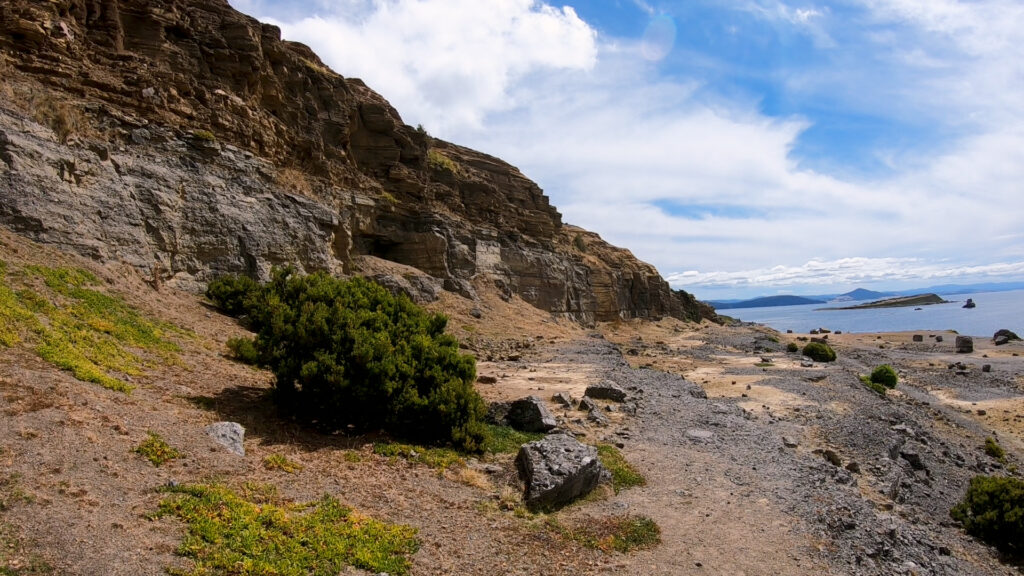
Wander around the convict sites in Darlington:
Walking through Darlington is a must-do for those looking to learn or see more about Tasmania’s colonial heritage! Maria Island has a convict history. Because all the buildings are so well preserved, it is one of the best places in Tasmania to see it! Near the ferry jetty, you find the commissariat store. The store is one of the oldest buildings on the island as it dates back to 1825 and was originally a storehouse. Today it is home to a visitor centre with some exciting displays for visitors. In Darlington itself, you can explore the penitentiary complex. Look into the coffee palace as it is now a little museum. If you are not sure about what you are seeing, plenty of signs are around to help you!
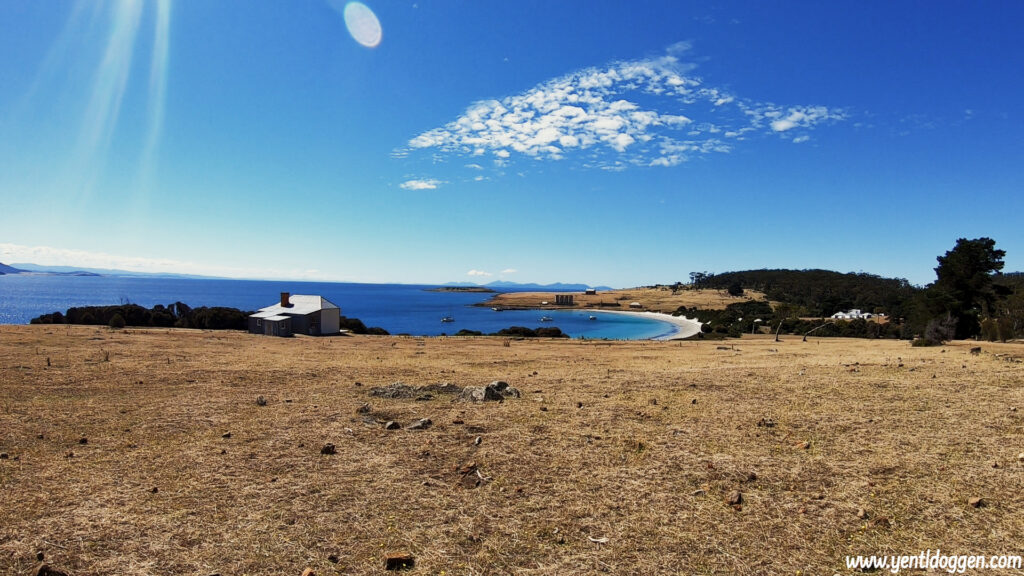
Go to the beach and get into the water:
I’m sure you heard before that Tasmania has some of the best beaches and bays in Australia, if not in the world. This statement is particularly true on Maria Island. Suppose you visit the island during the warmer summer months. In that case, I can only recommend getting to those beaches for a swim or even to snorkel!
Swimming on Maria Island:
If you like swimming the most on sandy beaches, you are in for a treat. The water here is almost translucent, and Maria island has plenty of bays within walking distance. The easiest one to reach is Darlington Bay beach. You can’t miss this one, as it’s only a short walk from the convict sites and the campsite. A little further up (about 30 min on foot), you find Hopground Beach, close to the painted cliffs, which was my favourite one! Next on the list, but close to a two-hour walk from Darlington, is Four Mile Bay, the longest beach on the island. Head to Shoal Bay, close to the Isthmus, for the warmest water. The bay here is pretty shallow, allowing it to heat up in the sun. You are in for at least a 3-hour walk to get here.
Snorkelling on Maria Island:
It is not widely known, but if you are into snorkelling and diving, Maria Island is a great place to visit. A vast marine reserve is protected here, allowing marine life to grow and flourish freely. Additionally, this area is well known for its great shipwrecks, which adds extra excitement to your adventure. This place is a well-known area to find some unique undersea creatures. There is an information board at the jetty to identify marine life. The island does not have snorkel gear or a wetsuit for hire, so you have to bring that over yourself. For more information on the Marine Reserve, visit the Maria Island Marine Reserve website.
Kayaking on Maria Island:
If you are into kayaking and would like to explore the water that way, it is possible. The only thing is that there are no kayaks to rent on the island, and you will need to bring your own. The ferry company doesn’t mind if you pay the extra kayak fee!
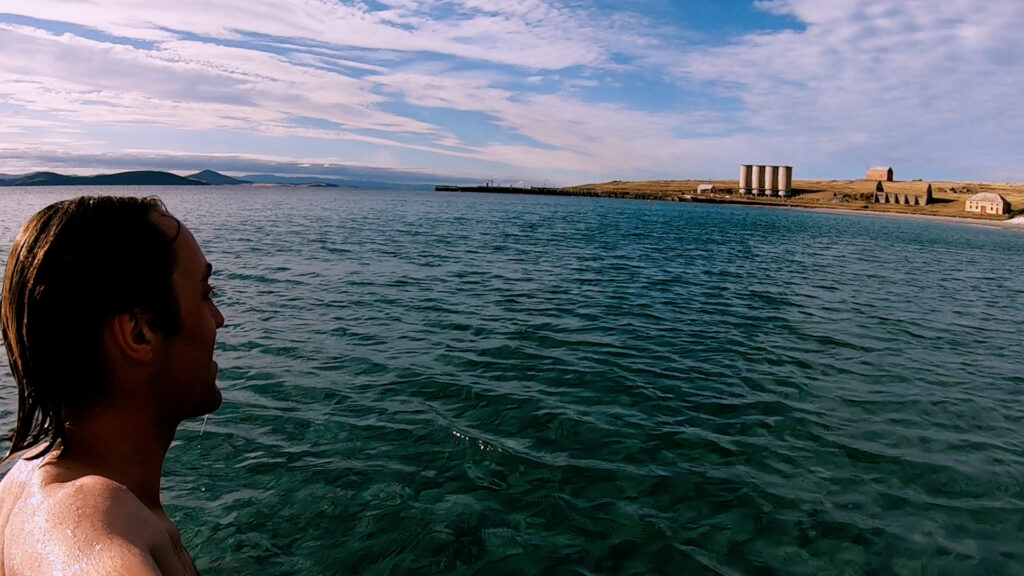
Get surrounded by the wildlife:
There is plenty of wildlife in this haven for native Tasmanian animals, and the wilderness by itself is an excellent reason to visit Maria Island. The animals here are pretty used to people and don’t mind coming closer. Maria Island is home to wombats, pademelons, wallabies, Forester Kangaroos, Cape Barren Geese and Tasmanian Devils. Besides, it is also an excellent place for birdwatching with 125 different species. All of Tasmania’s twelve endemic birds and the Forty-spotted pardalote live here.
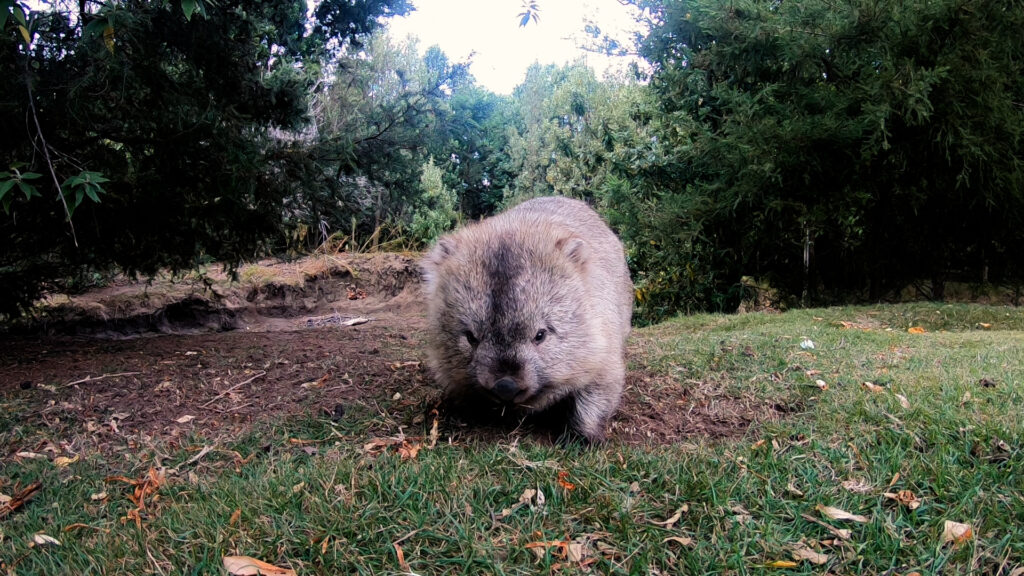
Spending longer on Maria Island:
As I have said before, a day trip will get you through the main attractions of Maria Island (listed above). If you can make a multiple-day trip to the island, I highly recommend that! There is so much more to the island, but you need the extra time to explore. Here are the add-ons for more days on the island.
Climb Mount Maria:
Mount Maria at 711m is the highest point of the island and the most rewarding hike around. It is less climbed than the more famous Bishop and Clerk track, but that doesn’t have anything to do with the views. On the contrary, the panoramic views from the highest point are pretty impressive. You see the island from above and get views all over the Tasmanian east coast. The track is relatively long and therefore less walked (16km) and will take about 6 hours to return from Darlington. An absolute must-do!
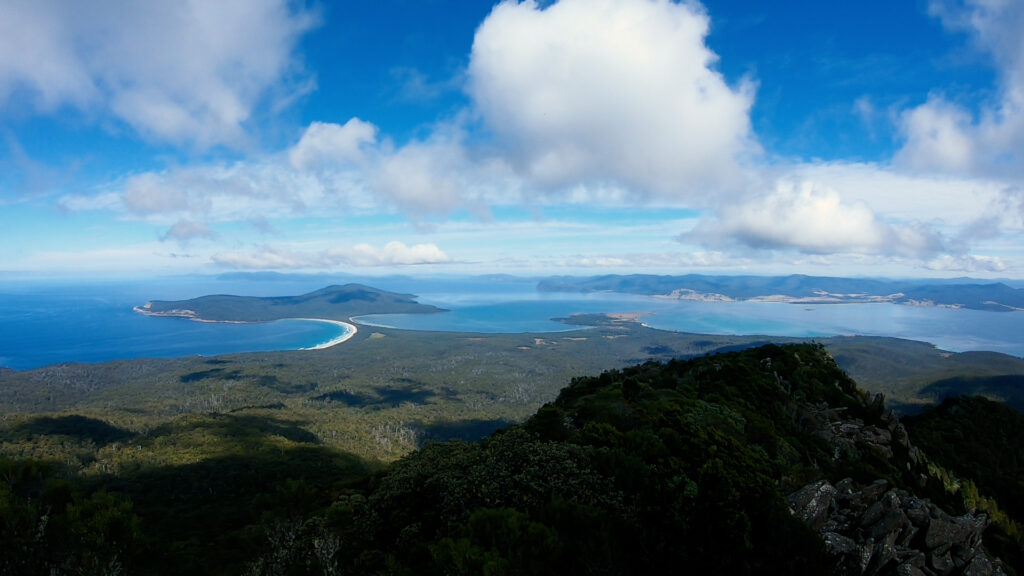
Hike the Bishop and Clerk track.
The track starts in Darlington and brings you past the Fossil cliffs to an easy-to-follow hiking path to the top. If you want to get up high but rather do it a little bit easier than climbing Mount Maria, this is it! In 4-hours, you get to the top of two dolerite column towers. The first is the bishop wearing a pointed mitre hat, and the second is the clerk following him. To get to the highest point, 620m, you need to do some rock scramble, but it is worth it!
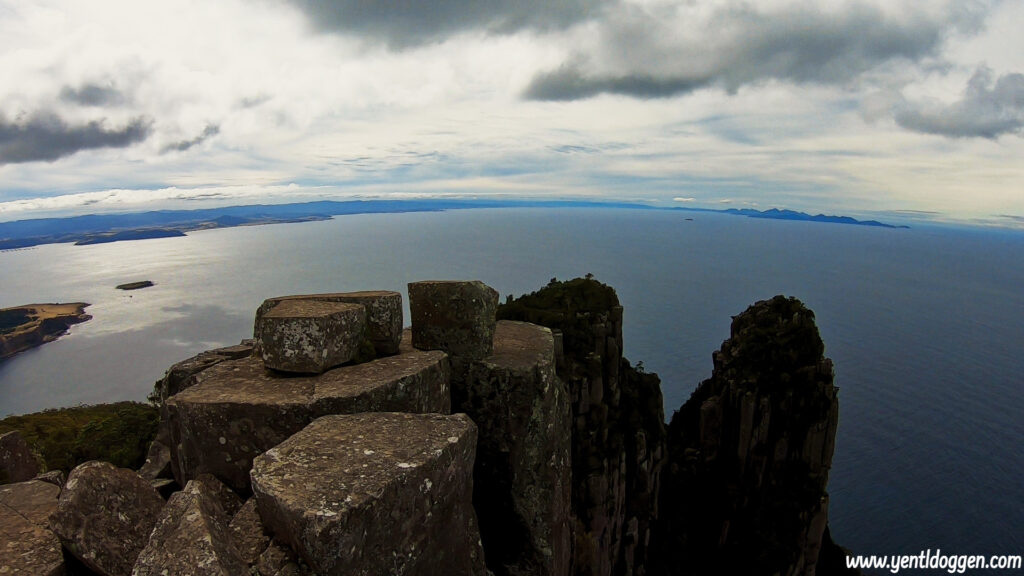
Escape the crowd at the Isthmus, Point Lesueur and the south.
As most people on Maria island are day-tourist, this is where you can escape all the crowds. A sandy isthmus joins the north and south islands, and it is a stunning place to walk around. Near the Isthmus, at Point Lesueur, you can explore the ruins of some convict area buildings. The same goes for the French Farm, where you can stay the night if preferred. You can head even more to the south to really get away if you have the time. Just continue past the Isthmus to Robey’s Farm or the Haunted Bay. Both are pretty places, but at least a 4-hour single walk from Darlington.
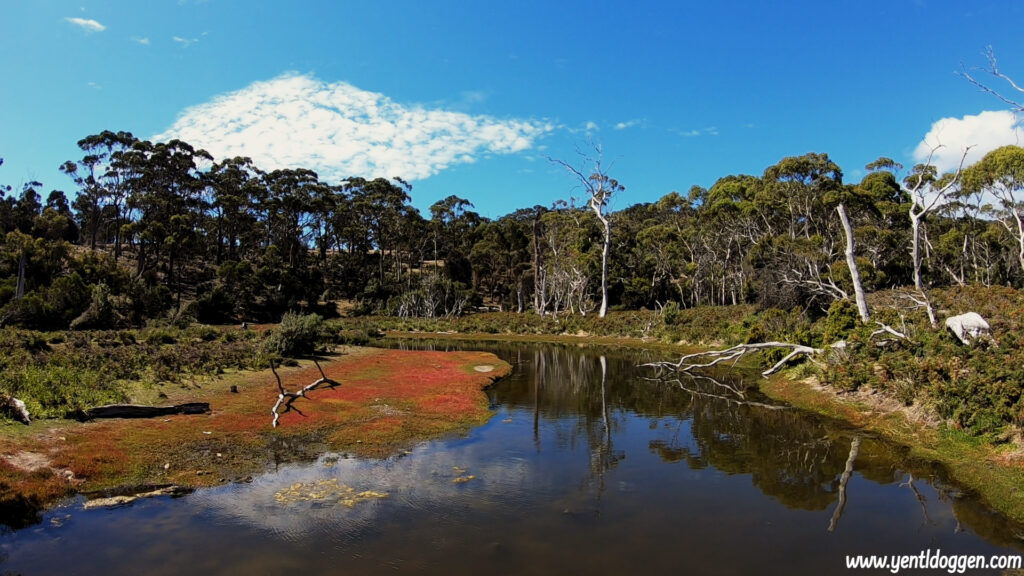
Walk the reservoir track.
The reservoir track is an easy walk that takes you through the more forestry areas of Maria Island and takes about 1,5 hours to complete. It is in the add-ons because the few historical ruins are not worth the time on a day trip. However, if you have the time, it is worth doing as long as you don’t exchange it for some of the highlights!
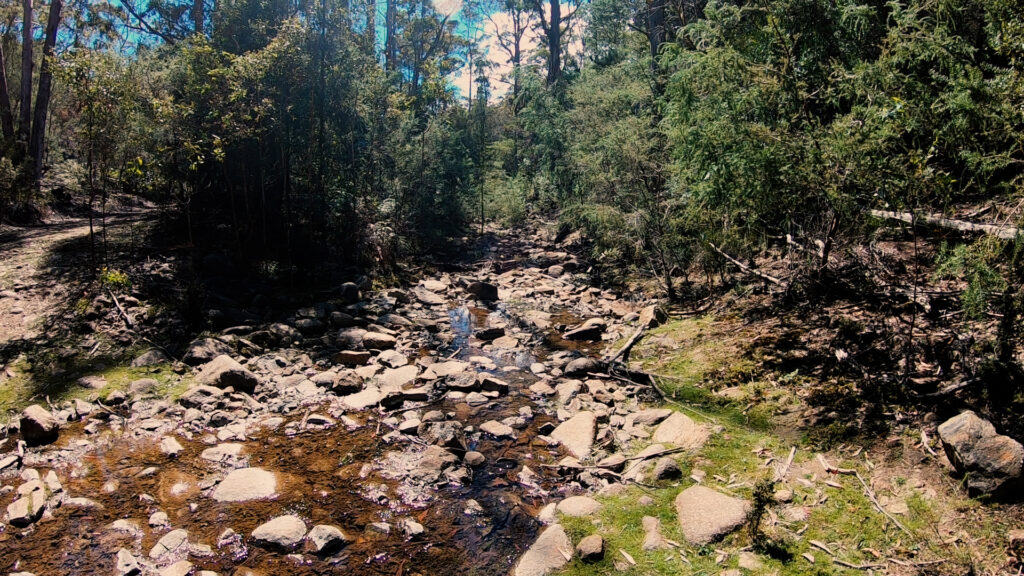
Watch the sunset and sunrise on the beach.
It gets pretty interesting here. You are on an island with limited people, limited service, limited electricity and no cars. It is your time to relax after a full day of exploring! If there was ever a great place to take in a sunrise or sunset, it must be Maria Island. Make sure to wake up early or at least watch the sun go down.
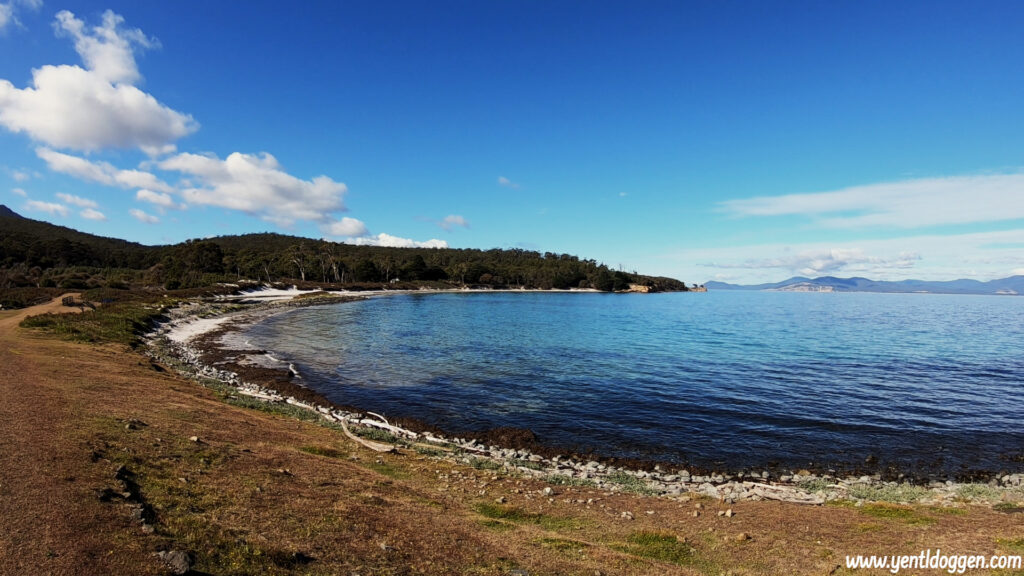
Try to see a Tasmanian Devil!
Tasmanian Devils are the largest carnivorous marsupials, and they are endangered. There are plenty of day-trippers that try to see a Tasmanian Devil. It’s just that they only come out when it is dark, so that isn’t likely to happen. However, you might be lucky if you spent the night on Maria Island. It is pretty hard to find them in the bush, but they sometimes look for food in the camp kitchens. If you stay in the Southern part of the island, you will hear them during the night.
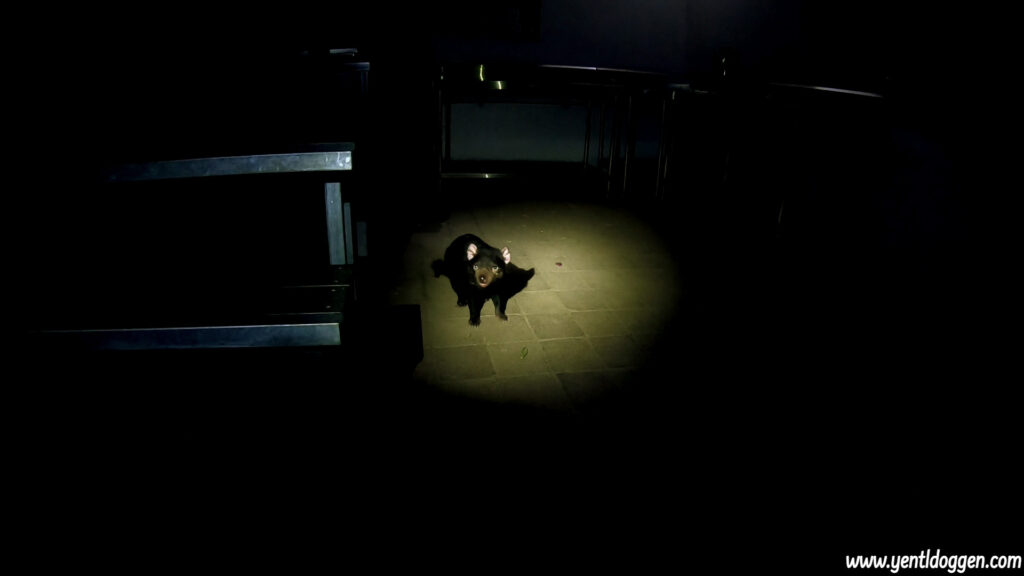
Where to stay on Maria Island:
The most common way for people to see Maria Island is by making a day trip. However, I do recommend staying the night. Most animals only come out after the last ferry leaves, and the island gets pretty quiet as all the day-trippers are gone. It gives you the time to visit this natural sanctuary thoroughly and gets you out of Darlington.
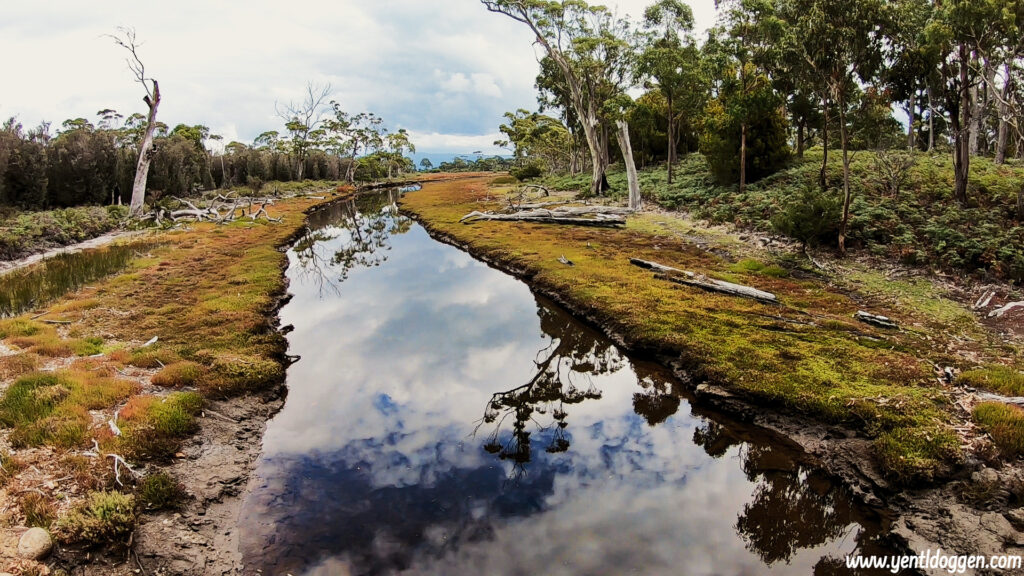
The old penitentiary in Darlington functions as a bunkhouse. These rooms were where they housed the convicts in the 1800s. The dorms are large, have a wood heater, a table and chairs and accommodate up to six people in every room. There is no bedding, only mattresses, so you must bring your linens or sleeping bag. The cooking happens in the big shared kitchen, but you have the perfect place to meet other travellers. If camping is more your style, there are three campsites on the island. Darlington, Frenchs Farms and Encampment Cove are all amazing!
The Old Penitentiary Bunkhouse:
Staying in the penitentiary bunkhouses adds to your unique experience on Maria Island. Where else do you get to sleep in an old convict gaol on a remote island? The old penitentiary in Darlington has ten basic dorm rooms. Be aware that you need to book these through the National Parks service, and in the summer season, they sell out months in advance. Rooms start at about AUD44 per night per room for two people. Additional persons come with an AUD10 fee, and special family rates are also available. A shared toilet and shower facilities are available in the main building. If you are not picky, some cooking utensils are provided, but they might come with a short waiting time when it is busy.
Camping on Maria Island:
Maria Island has three campgrounds. The main campground in Darlington is the closest to the ferry stop and locates pretty central on the island. The other two campsites are wilderness camps and require a hike or a bike ride to get there. All three campsites are open grass areas with trees where you can pitch a tent wherever you feel. You don’t have to book these sites. You simply register at the touristic information office in Triabunna before you leave.
The campsite in Darlington comes with a covered picnic and cooking shelter. There are also toilets, drinking water and showers. The French farm campsite, which only offers water and a bathroom, is 11 km from the ferry jetty. The Encampment cove campsite is about 13 km from the ferry jetty and offers water and a toilet. The unique feature of the wilderness campsites is that you can hear the Tasmanian Devils scream throughout the night, which you don’t hear in Darlington.
The campsite in Darlington:
- AUD 7 per person for a tent site.
- Free cold showers and AUD2 hot showers.
- Outdoor kitchen with BBQs.
- Filtered Drinking water.
- Free fireplace with firewood.
- Toilets.
The French Farm and Encampment Cove campsites:
- Free – no costs for a tent site.
- Composting toilets
- Unfiltered tank water
- Usually less busy – Up-close with nature
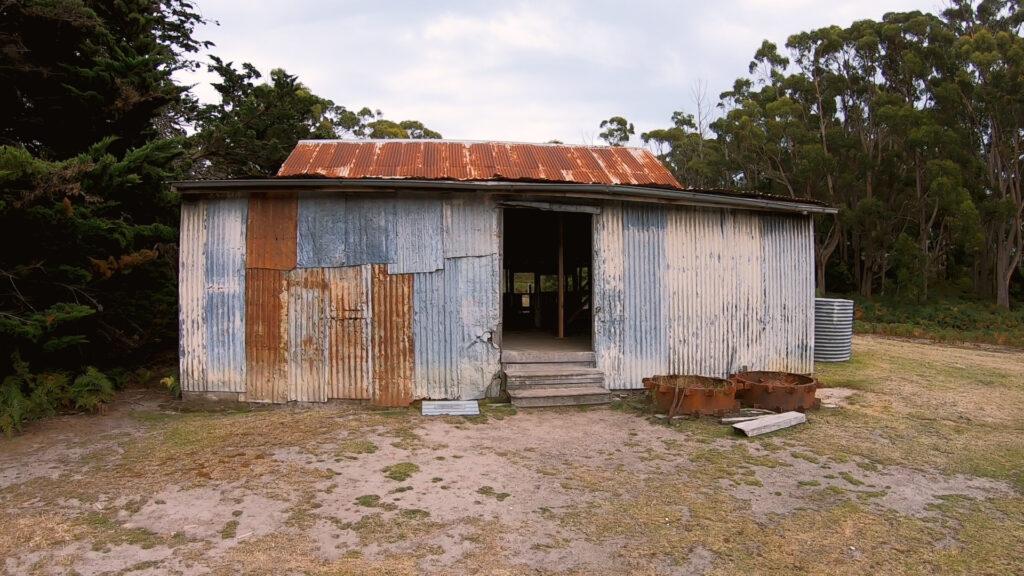
Packing list for Maria Island:
Packing lists are different for everyone, but I’ll cover some basics for your stay on Maria Island. There are no shops, so you need to be prepared!
A day trip packing list for Maria Island.
- Food (snacks and lunch)
- Water bottle (to refill on the island)
- Hiking Shoes or boots
- Sunscreen and a hat (to protect you from the Tasmanian sun)
- Rain jacket (to protect you from the Tasmanian rain)
- Swim gear and a towel
- Camera
- Bike and helmet (optional)
- Snorkel gear or kayak (optional)
Multiple-day trip – staying in the penitentiary. (add-ons to day trip)
- Food for additional time on the island
- Bedding (pillow, sleeping bag or sheets and blankets)
- Flashlight
- Cooking pots, dishes, utensils, etc.
- $1 coin for the showers
- toiletries
- Change of clothes
Multiple-day trip – Camping (add-ons to day trip)
- Tent
- Sleeping pad and sleeping bag
- Camping stove and water treatment (only if you sleep out of Darlington)
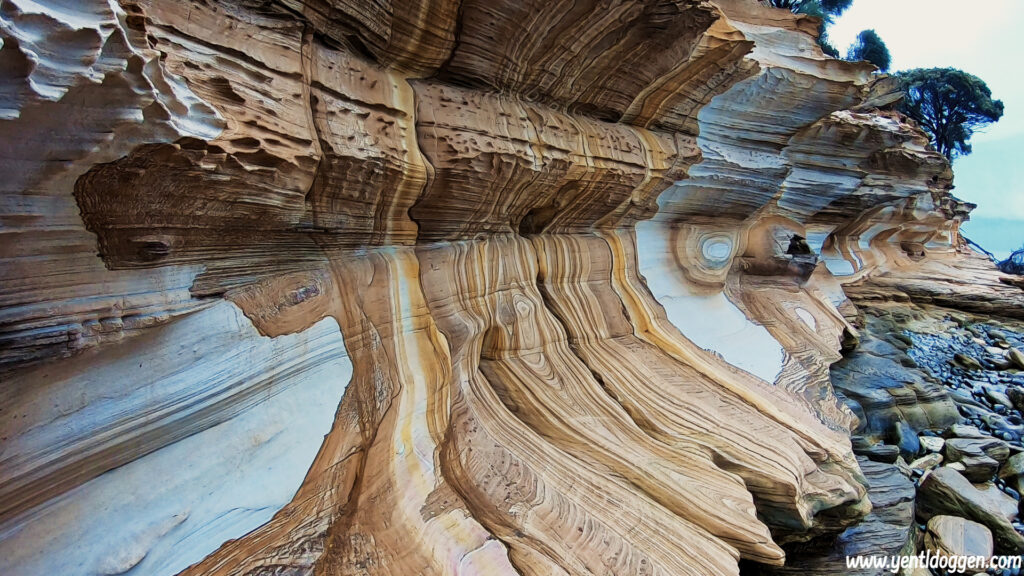
I hope and think that this list covers everything you need to know to make your trip to Maria Island even better. As you can tell, the island is worth visiting and worth moving to the top of your bucket list. You will love it! If you are not convinced, check out my Maria Island video or why you should visit Maria Island. If you are planning your Tasmania trip, make sure to check out all the other travel guides.
Did you enjoy this travel guide? Please let us know in the comments below! Do you want to start exploring but have questions on how to start? We are here to help with all your travel needs! For more inspiration, check out our travel blogs and vlogs or the tips & tricks section. To keep up to date with our adventures and future travel guides, follow us on Instagram and Facebook, or subscribe to our newsletter! Feel free to send us a message through the contact page! We can’t build this platform without our readers, so we thank you for your continued support. Stay tuned for many more adventures to come!


